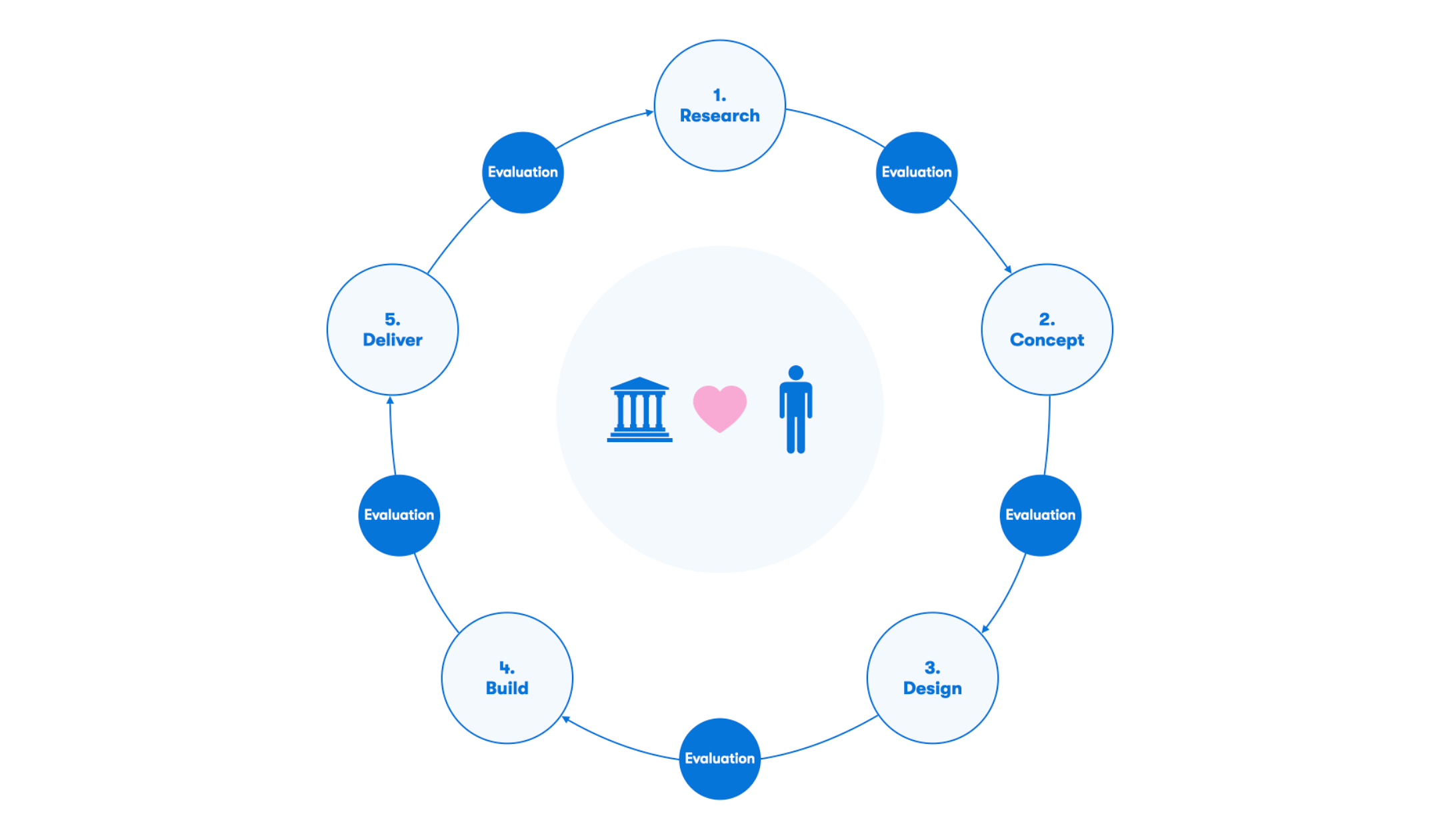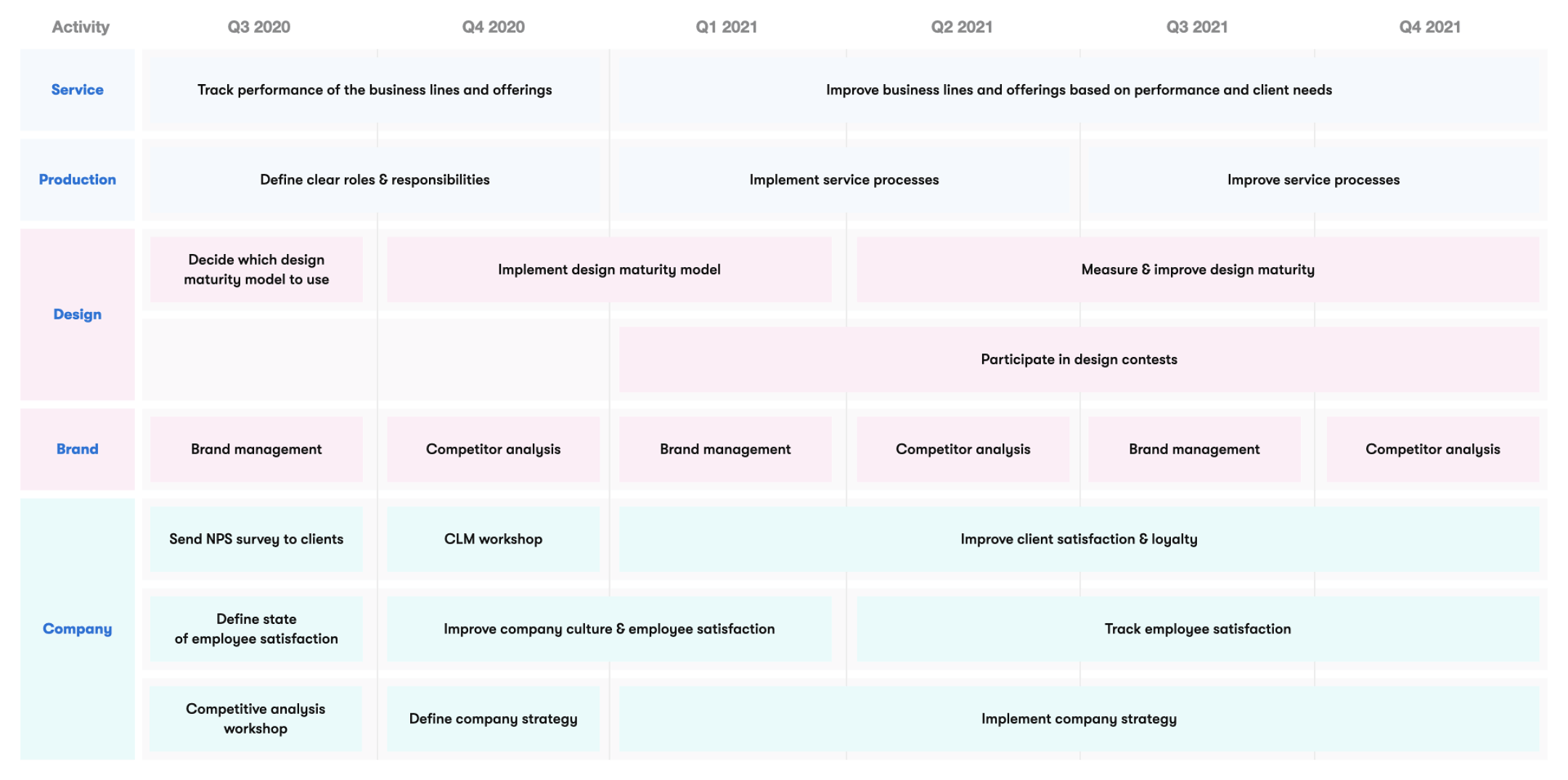Article
Creation of Design Strategy
Journey into business and strategic design
As part of my Master's thesis, I created a design strategy for Sangre Oy, a Helsinki-based digital agency. The strategic document guides the integration of design thinking and user-centric approaches into the company's culture and operations, aiming to mature its design practices and contribute to its growth and success.

Introduction
In the contemporary business environment, design has emerged as a critical factor that can significantly influence a company's success. This article provides a comprehensive summary of my Master's thesis, highlighting the key themes and findings that underscore the importance of integrating design thinking into business strategy.
The thesis begins by outlining the objective of creating a design strategy for Sangre, emphasizing the use of service design methods. The primary stakeholders in this endeavor were the company's management and employees. The ultimate goal was to produce a strategic document that would embed design thinking and user-centric design into the company's daily operations, guiding Sangre towards a more mature design practice.
Theoretical Framework
The theoretical section of the thesis delves into the business impacts of design, methods for measuring design maturity and abstract design concepts. Notably, the thesis references several key studies that highlight the financial benefits of integrating design into business practices. For instance, the Design Management Institute's 2015 study showed that companies utilizing design in their operations significantly outperformed the S&P 500 index.
The hypothesis posited that leveraging design as a means of strategy could provide significant competitive advantages in business.
Main Themes
The thesis identifies several main themes essential for developing a robust design strategy:
Business Plan
A comprehensive business plan is vital for setting long-term vision and direction. For Sangre, this involved clarifying the business model, competitive advantage, mission, values, strategy and vision. The thesis underscores the importance of aligning the design strategy with the overall business strategy to ensure cohesive growth.
Corporate Culture
Corporate culture plays a crucial role in the successful implementation of a design strategy. Sangre's culture, characterized by self-management and a flat hierarchy, was supported by principles such as transparency, shared thinking and distributed decision-making. Tools like Maslow's hierarchy of needs and Mihaly Csikszentmihalyi's flow model were suggested to foster a more humane and efficient organizational environment.
Brand Development
Understanding and developing a brand is critical. The thesis defines a brand as a holistic experience of a company, shaped primarily by how customers perceive it. The thesis breaks down brand development into three main areas: image, reputation and experience. A thorough analysis of touchpoints – both physical and digital – was conducted to enhance the brand experience.
Productization of Services
To stay competitive, Sangre needed to update its service offerings. This process involved analyzing competitors and defining clear value propositions. Service offerings were categorized into three business lines: strategy, design and technology, each with specific roles and objectives. Prototyping and user testing were integral to refining these services before their official launch.
Design Processes
The thesis outlines a user-centric design process for Sangre, originally introduced by Don Norman. This iterative process emphasizes the importance of involving evaluation in every stage of design, from research and concept development to implementation and delivery. The thesis also examines the integration of other process models, such as the double diamond and design sprint, to ensure flexibility and adaptability.

The design process, or more accurately, the service process, was developed for Sangre as part of my thesis. The process is influenced by User-Centric Design (UCD) and Design Thinking methodologies. I incorporated an evaluation loop between each step and introduced a mental model where business interests and customer needs meet to create meaningful services and sustainable business.
Research Process
The research process adopted a service design mindset, characterized by human-centric, collaborative, iterative, visualizing and holistic principles. The double diamond model was used to structure the research, emphasizing the importance of thoroughly understanding the problem space before jumping to solutions.
Background Research
Extensive desk research and qualitative methods were employed to gather insights from various sources, including public design strategies and relevant literature. This phase helped define the problem space and informed the development of the design strategy.
Co-Design
Co-design was a continuous activity throughout the process, involving close collaboration with colleagues and stakeholders. This iterative approach ensured that the strategy was relevant and aligned with the needs and goals of the company.
Visualization
Visualization techniques, such as mapping, were crucial for conveying complex relationships and dependencies within the design strategy. These visual tools helped in understanding the broader picture and facilitated better decision-making.
Analysis
The final phase involved analyzing the findings from previous stages to refine and finalize the design strategy. This comprehensive analysis ensured that the strategy was practical, actionable and aligned with Sangre's business objectives.
Results and Conclusion
The strategic document created for Sangre serves as a roadmap for integrating design thinking and user-centric approaches into Sangre's culture and operations. It guides the company towards more mature design practices, contributing to its growth and success. Throughout the process, the CEO of Sangre, Mikael Koskimaa, provided invaluable support and feedback. He complemented the thoroughness and strategic depth of the work, noting that the strategic document will play a crucial role in guiding Sangre towards achieving its vision of becoming a leading full-service digital design consultancy.

The roadmap defined in the Design Strategy focuses on improving service offerings and production processes, elevating overall brand and design maturity, and developing company culture and employee satisfaction.
Summary
By aligning the design strategy with the overall business strategy, fostering a supportive corporate culture, developing a strong brand, productizing services effectively and employing iterative design processes, Sangre is well-positioned to achieve its goal of becoming a full-service digital design consultancy. This comprehensive approach underscores the importance of design in driving business success and offers valuable insights for other companies looking to leverage design strategically.
You can find and read the digital version of my full thesis on the Theseus service. ▪